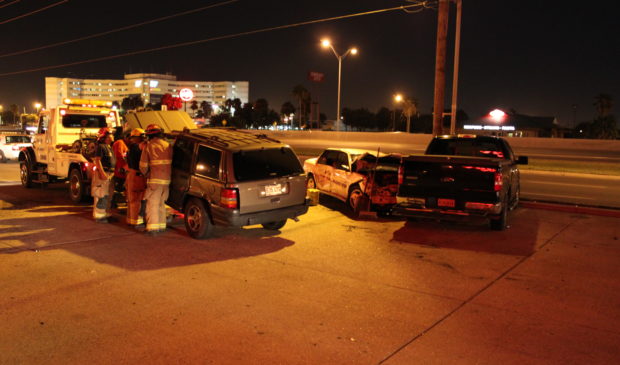City continues to work toward Vision Zero goals
Tuesday, August 13, 2019 by
Jessi Devenyns As of this past weekend, there have been 48 traffic fatalities in Austin since the beginning of the year. The city, according to an ambitious plan passed three years ago, would like to bring the number of annual traffic deaths down to zero by 2025.
One of the primary solutions the city is looking at is implementing more stringent speed management efforts. “We shouldn’t have to wait until someone is injured … to address speed,” said Lewis Leff of the Austin Transportation Department, speaking at the Aug. 5 meeting of the Public Safety Commission.
In order to do this, ATD is departing from its previous approach of addressing speeding when citizens report a hazard on certain streets, and instead moving to a citywide, data-based approach to identifying streets with the most crashes.
The Transportation Department’s Eric Bollich told the commission, “Seventy percent of our crashes are happening on 8 percent of our streets.” The data he presented to the commission shows that the most dramatic increase in fatalities occurs when the speed limit is raised from 30 to 35 miles per hour.
Such statistics are not unique to Austin. After seeing similar trends, the city of Boston lowered its default speed limit to 25 miles per hour in January 2017 – and the likelihood that cars would speed fell 30 percent, which according to Bollich, also reduces the odds of a crash.
ATD’s speed management program is still in the planning stages. Although Bollich noted that speed reduction was one solution to reducing the number of crashes and fatalities, it is not the only option. He presented a host of “engineered treatments” that include everything from conventional speed humps to more novel experimental markings and optical speed bars. These solutions will vary based on whether the street is a residential road or an arterial thoroughfare.
Traffic calming – the term for various efforts to reduce speeding – is part of an initiative called Vision Zero, which aims to reduce the number of people who die or are seriously injured in traffic crashes to zero. This includes motorists inside vehicles as well as cyclists and pedestrians who are involved in crashes.
Commissioner Preston Tyree pointed out this distinction, saying that in Austin, “there have been more people to die outside of automobiles than inside.”
While the overall number of traffic fatalities has been decreasing since 2015, when the Austin Police Department issued a report on types of traffic fatalities this past spring, Chief of Staff Troy Gay confirmed that there was a 35 percent increase in pedestrian fatalities from 2017-2018.
Other commissioners agreed it was important to consider in what context fatalities occur, as that could drive the selection of streets requiring speed management solutions.
“The budget we have is going to be shared between the residential streets and non-residential streets,” said Bollich. The money will be allocated to the highest priority streets based on the statistics.
The speed management program is still in the planning stages and will be ready for the public engagement process later this year. The final recommendations will become part of the 2020 budget requests for the Austin Transportation Department.
This story has been changed since publication. As of July 30, 1,565 years of life have been lost due to traffic accidents in Austin this year. Years of life is a public health measure that tallies the years of life that an individual did not experience and is based off an average age of 75 years. We originally reported this as lives lost, which was incorrect. Photo by Gabriel Saldana made available through a Creative Commons license.
The Austin Monitor’s work is made possible by donations from the community. Though our reporting covers donors from time to time, we are careful to keep business and editorial efforts separate while maintaining transparency. A complete list of donors is available here, and our code of ethics is explained here.
You're a community leader
And we’re honored you look to us for serious, in-depth news. You know a strong community needs local and dedicated watchdog reporting. We’re here for you and that won’t change. Now will you take the powerful next step and support our nonprofit news organization?









